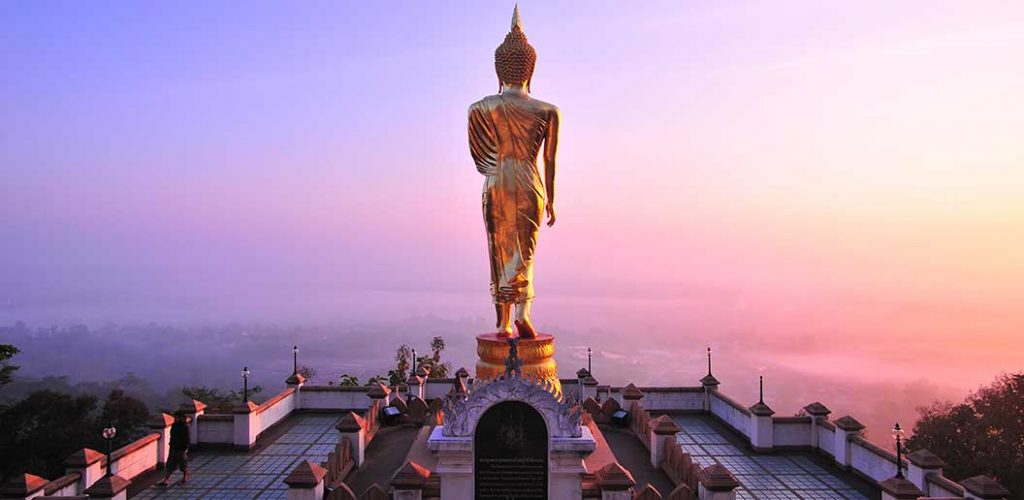Nestled cozily in northern Thailand in the province of the same name, Nan is a charming town hidden among rearing mountains. The roads, while less trodden, lead to an impressive view of authentic Thai culture. The lack of foreign crowds is noticeable here, unlike in Chiang Mai four hours away. Nan only became part of Thailand a hundred years ago and the town is characterized by Tai Lue culture, from its ancient temples, the indigenous communities and the slow lifestyle.
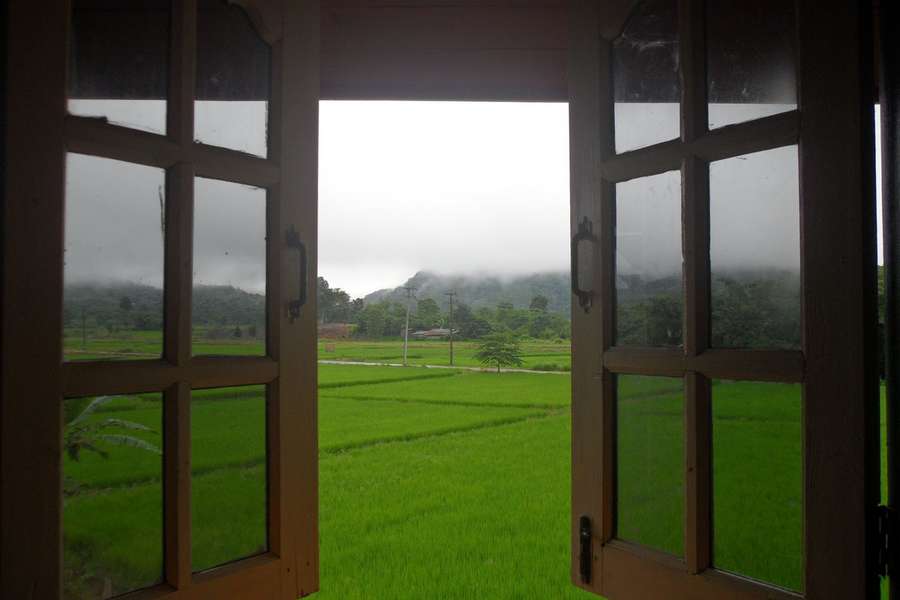
Traveling in Nan itself offers you the choice of cycle rickshaws or motorbike taxis since there are no tuk tuks. Songthaews run regularly through the surrounding villages and marked tourist areas and you can even hire a taxi for a day, provided you ask beforehand. Most guesthouses in Nan offer bicycles and motorbikes for rent. You won’t have much trouble finding a suitable means of transport but you might have trouble deciding where to go first!
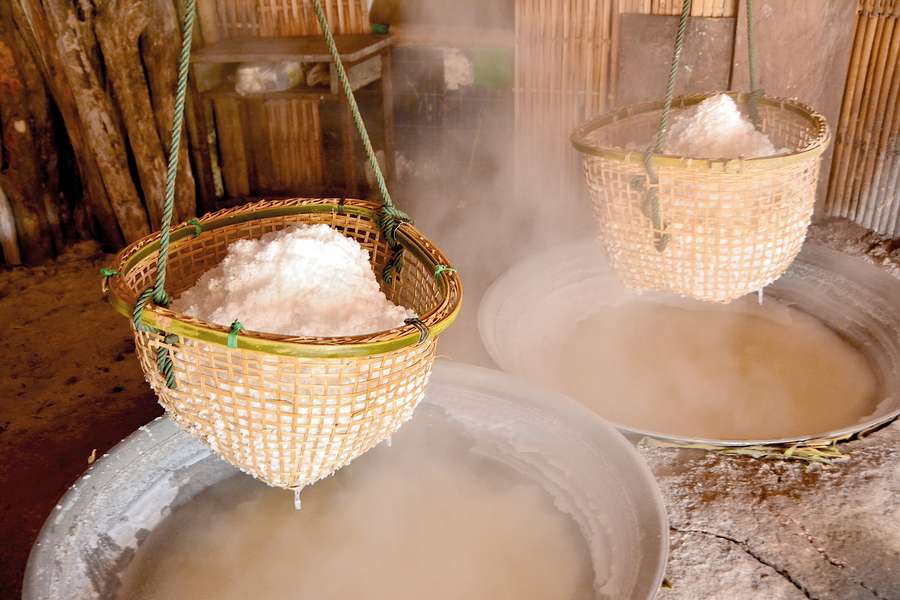
Bo Klua
A district right on the border of Laos, Bo Klua is some 90 km from Nan and famous for its salt ponds (hence the name –klua means salt). Salt has been extracted from the ponds here for centuries. The village is small but stunningly beautiful, nestled against the backdrop of high mountains and the lush jungle. The roads to Bo Klua itself offer a stunning route to explore, especially for motorbike lovers, with hardly any traffic to weave through. There isn’t much to do here but it is one of those places where doing nothing is a delightful pastime. Locals seem very happy to see a few foreigners up here so you can sit and pass the time of day in one of the town’s two very good coffee shops; wander around the tiny village, take a stroll down the valley along the banks of the Mang or sit in a riverside cafe sipping a cold one
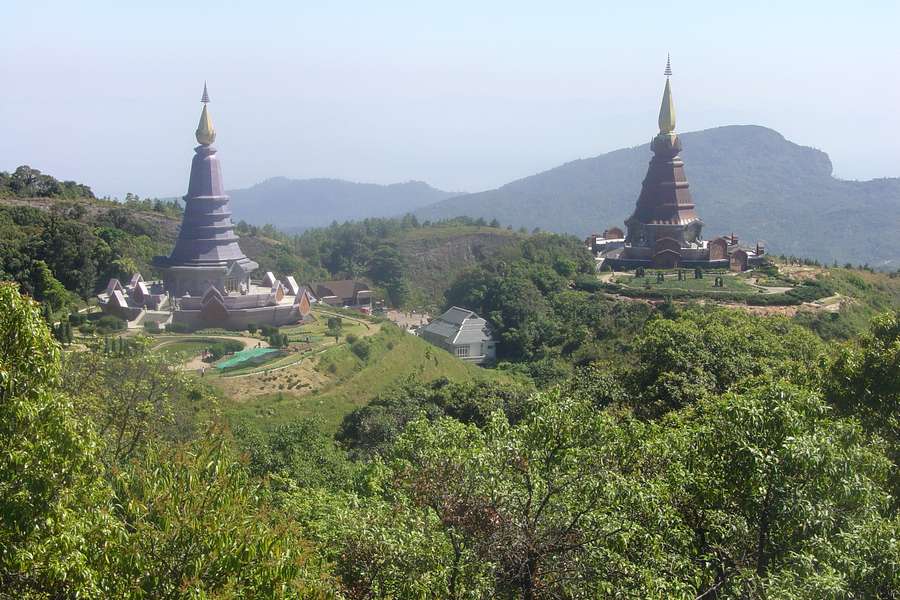
Doi Phu Kha National Park
The province is home to a whopping seven national parks which are full of waterfalls, trails for hiking and stunning viewpoints. Of them all, Doi Phu Kha National Park is the most famous and the largest. The park is named after the Chompoo Phu Kha, a tree famous for its attractive pink flowers that is now almost extinct in other parts of the world. The ascent up to the Doi Phu Wae peak takes 3 days and 2 nights, but it’s well worth the hike for all its magnificent scenery. The main entrance to the park lays half way between Pua and Bo Kluea, i.e an hour and a half away from the city. While there is a disappointing lack of wildlife, the trails are open to motorbikes and tourists can stay overnight, after an admissions fee, of course. The park gets unusually chilly during December-February, so there are also park chalets offered for those who cannot brave the cold. Deep in the mountains
Hong Chao Fong Kham The house of Chao Fong Kham is at least a century old and a fine example of Lanna architecture. The teakwood house was built without using screw or nails. Inside is a display of furniture and items used by the noble family, as well as art and craft demonstrations. Chao Fong Kham was a descendant of Chao Anantaworaritthidej, the 62nd Lord of Nan. It is now a museum and remains open five days a week from Wednesdays to Sundays from 9am to 5pm. There are regular exhibitions of traditional cloth weaving and you can even buy them, after viewing how they are made.

Nan National Museum
What was once the palace of Lord Phrachao Suriyaphong Pharidet, the last ruler of Nan, it is now a museum with interactive exhibits related to the history of the province and its people. The first floor is dedicated to the various ethnic groups like the Thai Lue and several hill tribes while the second floor showcases exhibits items collected throughout history such as ancient weapons, pottery and ceramics. The museum is only open five days a week from Wednesdays to Sundays with an entry fee of 100 baht. However, it’s not just the museum that is attractive but the exterior. The Frangipani tunnel is an enchanting pathway, with twisty branches extending from the trees of the same name. Also, on the compound of the museum is Wat Noi, Thailand’s smallest temple. It is only 3.5 meters tall!
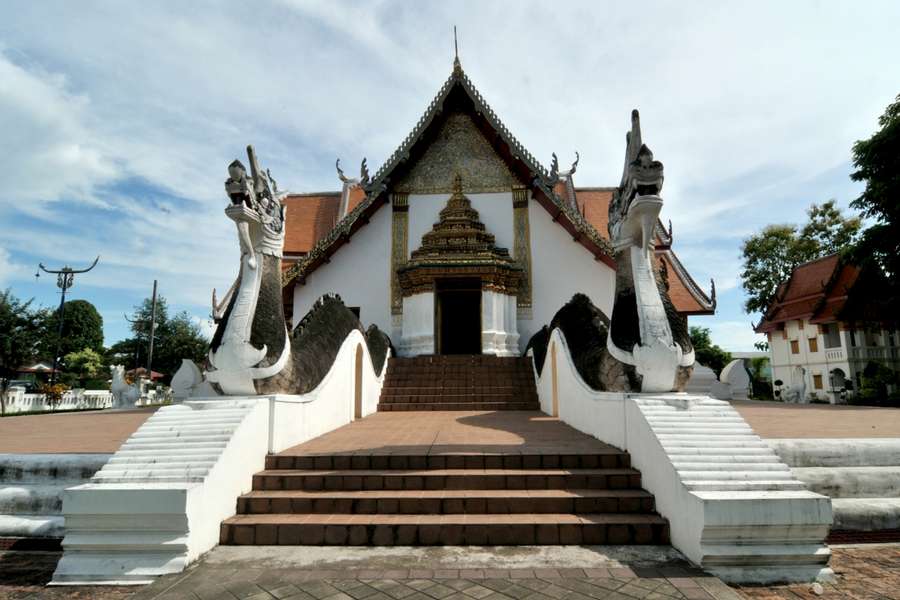
Wat Phumin
Considered the most attractive temple in the city because of its colorful murals and unique architecture, the temple dates back to 1596 and was rebuilt again in 1867. Some of the murals are still in excellent conditions, showcasing daily life in the 19th century as well as depictions of the Buddha’s previous incarnations. Among them all is the Whisper of Love (Poo Marn Yar Marn) where a tattooed man is whispering in a woman’s ear. Local legend has it that if lovers pray in front of this mural, their love will be eternal. The temple is located in the center of the town, near the Nan National Museum, and can be easily reached on foot from most hotels in downtown Nan. The temple grounds are open daily from 6am until 6pm and require a paid entry fee of 50 baht per person.
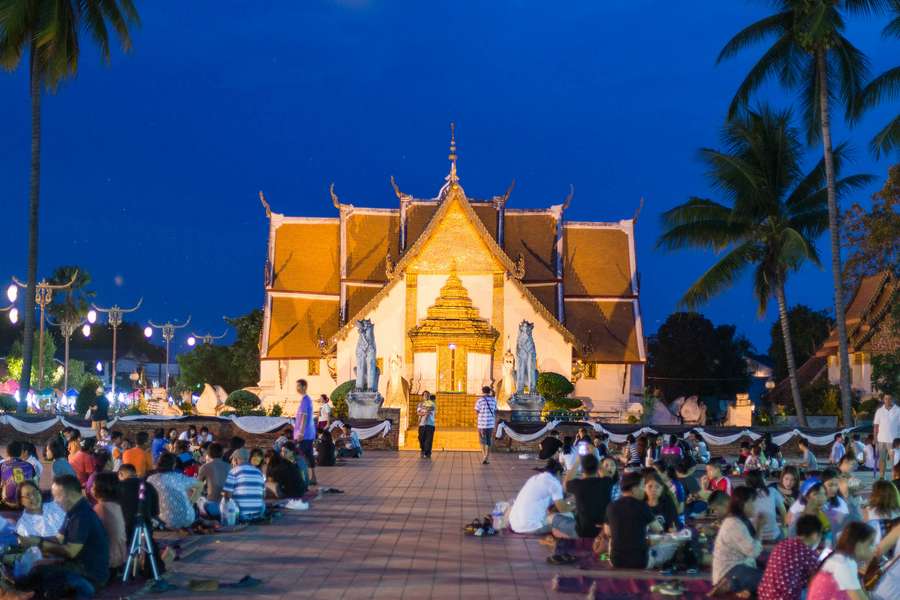
Khuang Muang
The town plaza is right outside the grounds of Wat Phumin. Used for ceremonial purposes in the past, now it is a hangout place for locals and travelers alike. On the weekends, the walking street comes alive with Northern-style street food and souvenirs. Local artists showcase their works here—from postcards, paintings, t-shirts mostly based on the mural of Whisper of Love.
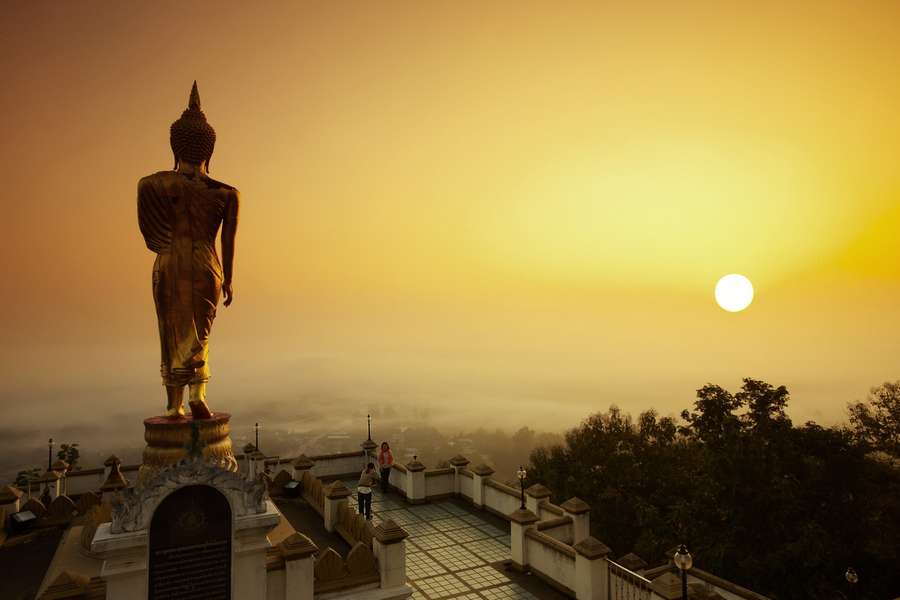
Wat Phra That Khao Noi
Also known as the Blessing Buddha, the stunning 29.5 foot Golden Buddha is the highlight at Wat Phra That Khao Noi. 303 steps lead you to a beautiful view over Nan, although there is also a road leading up. The best time to go is at sunrise or sunset. Built in 1487, the temple is just outside the main city center of Nan. The statue itself was erected in 1999 on the late King’s Bhumibol Adulyadej’s 72nd birthday. An annual temple fair is held (usually in May) with sky-rockets lit in the Buddha’s honor. Admission is free here and while it is recommended to have your own car, another easy way to get to Wat Phra That Khao Noi is either by taxi or songthaew. The temple is open daily from 8am to 5pm.

There is more to Nan than just a sleepy little town. It is home to ancient temples dating way before Nan was even part of Thailand. For those uninterested in temples and mountains, stop at Nan Art Café for a selection of European-style pastries, cakes and drinks. Or spend a few hours at Nan Riverside Art Gallery, a tranquil hub founded by Winai Prabripoo, one of Thailand’s best modern artists. Nan hosts longboat races on the river every October, the tradition dating back centuries, to honor the end of the rainy season. Either on foot or wheels, you will find traces of history, as far as the 13th century, embedded in the old town in the streets, architecture or food. Take your pick among the 400 temples in Nan, the eye-catching Wat Sri Panton with its all gold sculptures and the double seven-headed Nagas on the staircase, or Wat Ming Muang with its stunning white carved stucco exterior, considered to be the inspiration for Wat Rong Khun (the White Temple) in Chiang Mai. You can even participate in an exorcising ceremony at Wat Phra Kerd. And last but not least, don’t forget to pay your respects at Wat That Chae Haeng, an ancient Buddhist temple built almost six centuries ago. Nan is yet to be fully discovered by the hordes of tourists visiting Thailand every year and you can get there several ways.
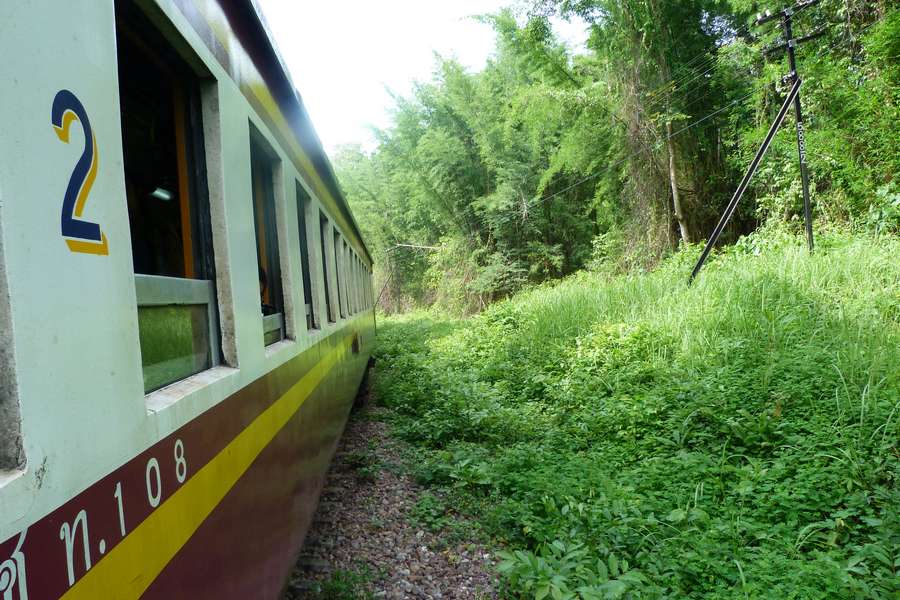
Nan’s tiny airport connects with Don Mueang Airport in Bangkok no less than four times a day. By air, Bangkok is an hour and a half away from Nan and it is highly recommended to check on prices and dates before catching a flight out through Nok Air or Thai Air Asia. If you prefer your feet on the ground, be prepared for a long trip—at least 10 hours. You can get buses from Mo Chit bus station, with two buses leaving every morning and evening. For travel within Nan province, there are minibus services available every hour. Although, considering the winding roads, you might feel safer on Green buses which travel through Phayao or Phrae and Lampang. Of course, considering the vague schedules, time and rates are liable to sudden change so check in advance before you leave your hotel although most hotels and guesthouse staff provide advance tickets for a small fee as well. If you’re traveling directly to Nan city, the train is not advisable as the nearest train station is in Den Chai; which is 2.5 hours from the city although buses run every couple of hours from Den Chai to Nan.


